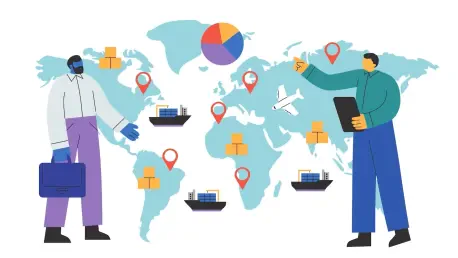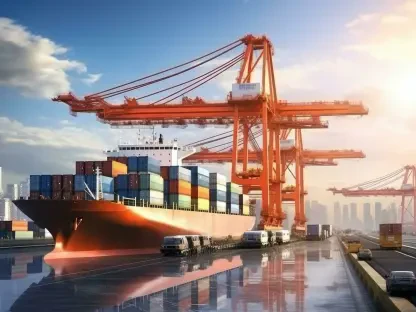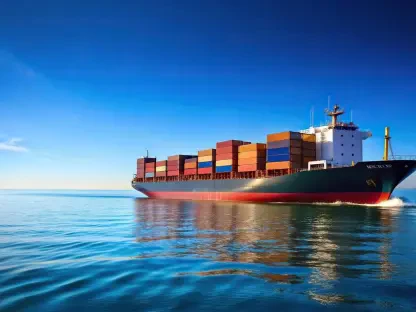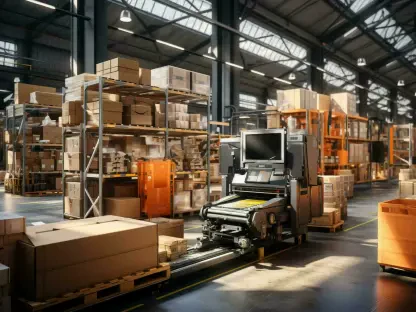A striking revelation from a recent FedEx survey conducted in September 2025 unveils that 76% of Asia-Pacific (APAC) small- and medium-sized enterprises (SMEs) have reported a surge in exports to Europe over the past year, signaling an unprecedented boom in this vital trade corridor. This dynamic trade lane, connecting two of the world’s most economically vibrant regions, stands as a cornerstone for SMEs seeking to expand their global footprint and diversify markets amid fluctuating economic conditions. The significance of this growth cannot be overstated, as it fuels economic resilience and fosters innovation for businesses on both sides. This analysis delves into the current trends shaping the Europe-APAC trade landscape, explores key opportunities, addresses persistent challenges, offers expert insights, and provides a forward-looking perspective with actionable strategies for SMEs aiming to capitalize on this momentum.
Current Landscape of Europe-APAC Trade for SMEs
Growth Trends and Key Statistics
The Europe-APAC trade lane has demonstrated remarkable strength, with data from the FedEx survey highlighting robust engagement from SMEs across both regions. Notably, 76% of APAC SMEs have seen increased export volumes to Europe, while an impressive 87% of European SMEs project sustained or growing exports to APAC in 2026. This mutual confidence underscores the corridor’s role as a pivotal axis for global trade among smaller businesses.
Further solidifying this trend, the Asia-Europe trade lane has maintained a consistent growth streak for 30 months as of August 2025, reflecting sustained momentum that shows no signs of slowing. This prolonged period of expansion points to deep-rooted demand and strategic alignment between the regions, creating fertile ground for SME development.
Market priorities also reveal targeted interests, with APAC SMEs focusing on the United Kingdom (42%), Germany (40%), and France (38%) as primary export destinations. Conversely, European SMEs are honing in on China (55%), Japan (36%), and India (26%) as key APAC markets, illustrating a complementary dynamic that fuels bilateral trade growth and market penetration.
Real-World Impact and Market Dynamics
SMEs are actively seizing opportunities within this trade lane, with APAC businesses capitalizing on European demand for competitively priced goods and using the region as a gateway to diversify their market exposure. For instance, many smaller firms from APAC are tapping into niche sectors like sustainable products, which resonate strongly with European consumers prioritizing ethical sourcing.
On the other side, European SMEs are drawn to APAC markets, particularly China, due to its massive consumer base and manufacturing prowess. A hypothetical example might involve a mid-sized European tech firm partnering with Chinese distributors to access a broader audience, leveraging local expertise to navigate cultural and operational nuances while scaling operations efficiently.
Supporting these endeavors, logistical enhancements play a critical role, with FedEx introducing five additional weekly flights between Asia and Europe and shaving transit times, such as reducing shipping duration from Vietnam to Europe by one day. These improvements enable SMEs to meet tight deadlines and maintain competitiveness in fast-paced markets, bridging geographical divides with greater ease.
Challenges and Barriers in Cross-Border Trade
Regulatory and Operational Obstacles
Despite the optimism, significant hurdles persist in the Europe-APAC trade lane, with 86% of APAC SMEs and 78% of European SMEs identifying regulatory changes, complex customs processes, and global market volatility as primary barriers. These issues often translate into delays at borders, disrupting supply chains and hampering delivery schedules.
The impact of such challenges is profound, as they inflate operational costs and strain the limited resources of SMEs, which often lack the infrastructure of larger corporations to absorb setbacks. For instance, unexpected policy shifts can result in held shipments, creating financial strain and eroding customer trust over time.
Both regions express a shared urgency for robust support mechanisms to navigate these complexities, as highlighted in the FedEx survey findings. Without streamlined processes or accessible guidance, many SMEs risk missing out on the full potential of this trade corridor, emphasizing the need for collaborative solutions to ease bureaucratic burdens.
SME Demands and Industry Solutions
Addressing these pain points, SMEs are vocal about their needs, with 30% of APAC and 41% of European businesses advocating for advanced digital tools to enhance supply chain visibility and optimize shipping efficiency. Additionally, 27% of APAC and 41% of European SMEs seek specialized customs expertise to manage regulatory intricacies effectively.
In response, FedEx has rolled out initiatives like Electronic Trade Documents and the SMB Hub, designed to simplify international trade through digital innovation and expert resources. These tools empower SMEs to tackle paperwork digitally and access tailored advice, reducing friction in cross-border operations.
Broader industry trends also reflect a push toward improved connectivity, with FedEx operating 26 weekly flights linking Europe to APAC and achieving express shipments to major destinations in just 48 hours. Such advancements signal a commitment to meeting SME demands, fostering an environment where smaller players can compete on a global stage with greater confidence.
Expert Insights on Europe-APAC Trade Potential
Industry leaders and analysts emphasize the Europe-APAC trade lane as a linchpin for SME growth, noting its capacity to drive economic diversification amid global uncertainties. Their perspectives highlight how mutual optimism—evidenced by 85% of APAC SMEs planning expansion into Europe—creates fertile ground for sustained collaboration and innovation.
Experts also stress the transformative power of digital solutions in overcoming trade barriers, pointing to tools that streamline processes as essential for leveling the playing field. They argue that without such advancements, many SMEs would struggle to keep pace with larger competitors in navigating complex international markets.
However, concerns linger over persistent regulatory volatility, which could undermine growth if left unaddressed. Analysts underscore the critical role of logistics providers in bridging these gaps, advocating for continued investment in infrastructure and expertise to ensure SMEs can thrive in an increasingly interconnected global economy.
Future Outlook for Europe-APAC Trade Growth
Looking ahead, the Europe-APAC trade corridor holds promise for deeper integration through potential trade agreements that could target key markets like China for European SMEs and the United Kingdom for APAC businesses. Such partnerships might unlock greater market access, fostering economic resilience against global disruptions.
Yet, challenges such as evolving customs regulations and geopolitical tensions remain on the horizon, posing risks to seamless trade. These factors could complicate expansion plans if not mitigated through proactive policy dialogue and adaptive strategies tailored to regional nuances.
Innovations in logistics and digital platforms are expected to further reduce transit times and costs over the next 5 to 10 years, potentially creating a more integrated trade lane. While this offers exciting prospects, risks like market saturation or economic downturns loom as cautionary notes, urging SMEs to balance ambition with strategic planning for long-term stability.
Closing Reflections and Next Steps
Reflecting on past developments, the Europe-APAC trade lane has emerged as a powerhouse of growth, underpinned by mutual confidence among SMEs and a consistent upward trajectory in trade volumes. Persistent barriers of regulatory complexity and operational delays stand as notable challenges, yet the pivotal role of logistical and digital solutions offers a pathway to progress.
Moving forward, SMEs are encouraged to tap into resources like the FedEx SMB Hub for tailored support and to stay vigilant about regulatory shifts that could impact operations. Industry leaders face a pressing call to prioritize simplified customs frameworks and bolster connectivity, ensuring that this trade corridor continues to serve as an economic engine for smaller businesses globally.
As a final consideration, fostering partnerships between policymakers and logistics providers appears essential to unlock the full potential of this vibrant trade relationship. By addressing structural challenges collaboratively, stakeholders can pave the way for a future where SMEs not only survive but thrive in the global marketplace.









